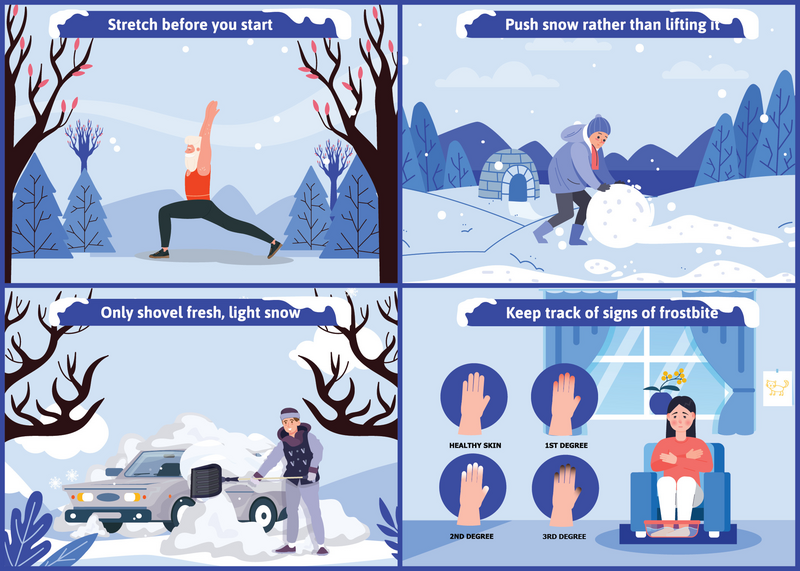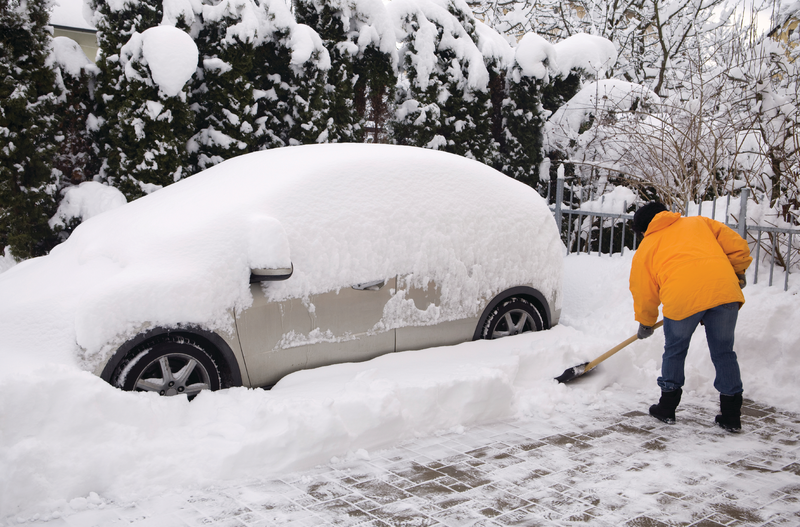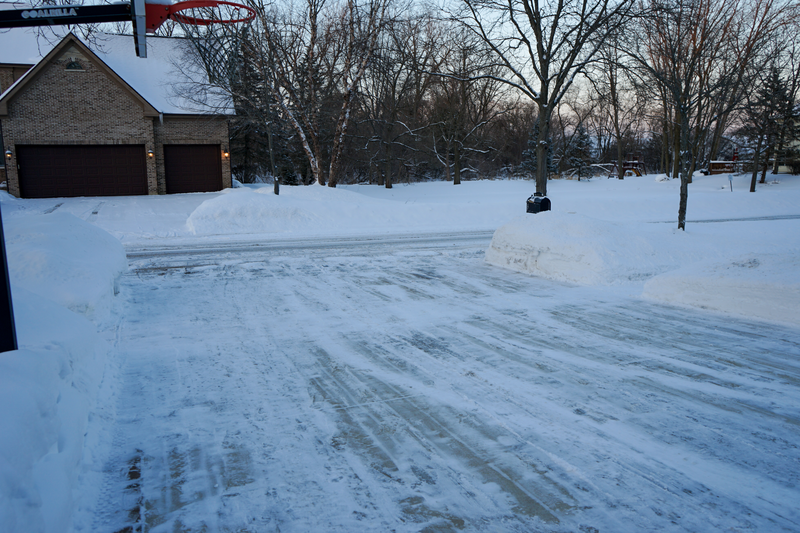- AppliancesElectriciansHVACLandscapingLocksmithPest ControlPlumbingRenovationRoofingT V RepairAll Home Improvement
- Car AccidentClass ActionCorporate LawCriminal DefenseDivorce LawEmployment LawFamily LawFinancial LawLegal AidMedical Injury LawyersMedical MalpracticeReal Estate LawWater Fire RestorationAll Legal
- InvestmentRetirementAll Finance
- Animal InsuranceAutoGeneral InsuranceHealth PolicyHome RentersAll Insurance
- DentalHealth SpecialistsAll Medical
- Animal CareVeterinaryAll Pets
- Auto GlassTowingAll Automotive
Stay Safe While Shoveling Snow: 8 Tips for Homeowners

If you live in the northern U.S. or Canada, you’re well aware that it’s snow time of year to be caught outside in the elements. However, after a blizzard rolls through, someone’s gotta clear a path for the car to get out. If you drew the short straw this time around, you should know you’re up for a formidable task: According to data compiled by the Consumer Product Safety Commission, shoveling snow causes thousands of injuries and up to 100 deaths every year.
Read More Home Improvement Articles
Great. So now the worst winter chore is actually out to kill you, too.
The reason shoveling is so dangerous for some people is because it can increase the risk of a heart attack, says the American Heart Association.
Snow is heavy and hard to move. You know that; you’re trying to use that measly little shovel from the hardware store to move massive drifts, and all the while, sweat is dripping down your back and pooling in your snowsuit. All that exertion can put some pressure on your heart — as well as your temper.
This is especially true if shoveling is the most activity you’ve done in a while. The cold can double down on the danger. Low temperatures can constrict your arteries, decreasing blood supply and increasing the risk of a blood clot. This puts you at a higher risk for a heart attack. Individuals over 40 should be particularly careful when getting their shovel on.

Protect Your Heart While Shoveling Snow
These tips from the National Safety Council can help you decrease the strain shoveling puts on your heart:
Take It Slow
Warm your body up to activity by doing some stretches before you head out to shovel.
Get Out Ahead of It
Shovel while the snow is still coming down — if you can do so safely, of course. This is a good strategy for two reasons: One, because fresh, powdery snow is lighter than packed-down wet stuff and two, because shoveling small amounts of snow over time is less strenuous than trying to get rid of a big accumulation all at once.
Push, Don’t Lift
Don’t copy the form of a cartoon character who scoops up a big shovelful of the white stuff and chucks it over their shoulder like it’s nothing. It’s not nothing. Decrease the amount you lift by making like a snowplow and pushing the snow where you want it to go, rather than picking it up and placing it there. If you have to lift snow, use a small shovel or only fill it up part of the way. And remember the old adage: Lift with your legs, not your back.
Press Pause
Don’t work until you’re so exhausted that you simply can’t go on. Take a cocoa break and pawn the job off to someone who’s been snug and warm inside for the last hour.
Know Thyself
If you have a history of heart attacks, heart disease or other cardiovascular issues, leave the shoveling to someone else, or call in a professional service. And if you believe you’re experiencing the signs of a heart attack (chest discomfort, shortness of breath, lightheadedness, etc.), don’t hesitate to call 911.

More Related Articles:
- How Much Does a Home Inspection Cost?
- 4 Tips for Hiring a General Contractor for Your Next Remodeling Project
- Should You Hire a Contractor or a Handyman?
- 5 Things to Look For When You're Hiring an Electrician
- What to Look for When Hiring an Exterminator
Not all the dangers of shoveling are heart-related. Even the healthiest and fittest of us can follow these snow-removal safety tips:
Reduce Choking Risk
Don’t eat, chew gum or smoke while shoveling.
Keep Warm
Don’t let yourself get too cold out there, and be especially mindful of the state of your extremities. Know the signs of frostbite and seek medical attention if you experience the following:
- First-degree frostbite (frostnip): Skin is red and cold to the touch
- Second-degree frostbite: Skin turns from red to pale or even blue
- Third-degree frostbite: Skin becomes blue or splotch, and the area may be numb
To prevent frostbite, Healthline says to avoid contact with metals surfaces in the cold, dress for the weather, change out of wet clothing ASAP and stay hydrated.
Snowblower Safety
So you have a snowblower. Good for you. You’re above all this shoveling nonsense. Even so, the American Academy of Orthopedic Surgeons recommends safe operation of your snowblower. Turn it off if it jams. Don’t leave it alone while it’s running. Never run it or add gas to it in an enclosed space. And keep your hands free of the moving parts.
Elocal Editorial Content is for educational and entertainment purposes only. Editorial Content should not be used as a substitute for advice from a licensed professional in your state reviewing your issue. Systems, equipment, issues and circumstances vary. Follow the manufacturer's safety precautions. The opinions, beliefs and viewpoints expressed by the eLocal Editorial Team and other third-party content providers do not necessarily reflect the opinions, beliefs and viewpoints of eLocal or its affiliate companies. Use of the Blog is subject to the
Website Terms and Conditions.The eLocal Editorial Team operates independently of eLocal USA's marketing and sales decisions.



